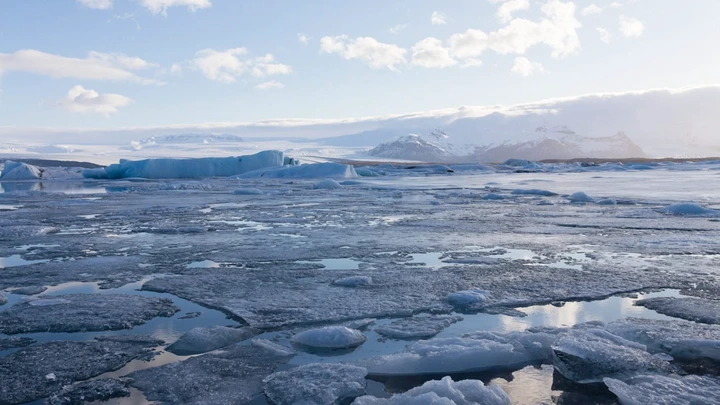Researchers express alarm over elements causing extraordinary shifts along the Arctic coastline: 'This research serves as a crucial alert'

View pictures in App save up to 80% data.
A recent study conducted in Alaska reveals that the state's coastal erosion is speeding up due to "compound climate impacts." This phenomenon could potentially affect six to eight times more land compared to the effects of erosion by itself.
What’s going on?
The rising temperatures of our planet are causing swift transformations in the coastal areas of the Arctic. Following a thorough examination of 75 years of aerial and satellite data, researchers have identified a growing threat of coastal erosion in the Arctic region.
Other less-understood processes are threatening Arctic coastlines that haven't received the same amount of attention. These "compound climate impacts" include rising sea levels, permafrost thaws, intensifying storms, and sea ice thinning.
Inhabitants of northern Alaska have observed the effects of permafrost thaw subsidence, which refers to the sinking of the land surface caused by the melting of permanently frozen ground, commonly referred to as permafrost.
Certain scientists express worry that organizations like the U.S. Army Corps of Engineers and the Federal Emergency Management Agency may not be seeing the full scope of the situation.
"These sorts of bodies with a lot of resources may have not been paying enough attention to permafrost thaw subsidence as an agent of coastal change," according to Roger Creel, the study's lead author and postdoctoral scholar in Woods Hole Oceanographic Institution's Department of Physical Oceanography, per Phys.org. "This study is a wake-up call to expand the conversation.
"Creel noted, 'The combined effects of climate change are speeding up alterations along the coast. We should anticipate a nonlinear increase in coastal impacts, particularly in areas such as Northern Alaska.'"
The acceleration of coastal erosion in Alaska is concerning for several reasons. Firstly, it threatens local communities and infrastructure, as many towns and villages are situated along the coast and are at risk of being washed away. Secondly, the erosion can lead to the loss of habitat for wildlife, disrupting local ecosystems and biodiversity. Additionally, the erosion can contribute to the release of greenhouse gases trapped in permafrost, exacerbating climate change. Lastly, the cultural significance of these coastal areas for Indigenous populations is at stake, as they rely on the land for their way of life and cultural practices. Overall, the rapid erosion poses significant environmental, social, and economic challenges that require urgent attention.
"By 2100, unless coasts respond differently to future change, these compound effects may transform 6-8x more land than erosion alone may impact," according to the study. "Without mitigating measures, by 2100, coastal change could damage 40